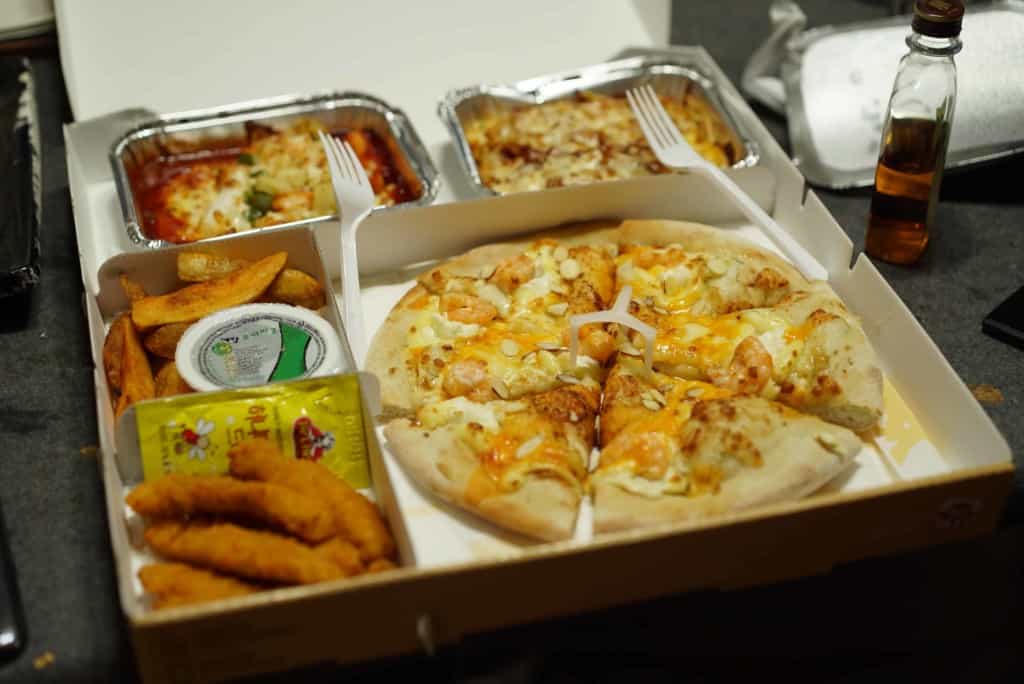There’s no such thing as free delivery
The environmental cost of online food delivery
We’ve all done it. It’s Friday night, you’ve had a long week, and you don’t feel like cooking. You’re not in the mood for pizza or Chinese food, so you open up the SkipTheDishes or Uber Eats app on your phone and start scrolling. You settle on your favourite pho place, select two food items and two drinks and hit send. You’ve ordered enough for free delivery, so you mull around your house waiting for your food to arrive, checking on your order status every few minutes.
When it finally arrives, the courier pulls the steaming bags from his thermal duffle bag and you shuffle them into the house. Success is yours as you gorge yourself. If there are leftovers, you toss them in the fridge. Otherwise the greasy takeout containers, along with the drink cups and straws, are tossed in the garbage and never thought of again.
If you were asked to estimate the total environmental impact of the above story, do you think you could list everything? In his 2010 book How Bad Are Bananas? The Carbon Footprint of Everything, Mike Berners-Lee explains spending three minutes on your phone leaves a carbon footprint of about 170 g. Sounds small, but consider two things: how many times do you check on the status of your order and how many times do you order each year? If you order out once a week, that’s almost 9 kg of carbon dioxide.

Now let’s look at the delivery person driving a car that would not be en route to your favourite pho place (or your house) if you hadn’t placed your order. Food delivery companies do not regulate the fuel efficiency of their vehicles, and there is a good chance it’s not a Tesla or a Prius.
Then there is the packaging. Some restaurants are slowly switching to materials that are more easily recycled, but many are sticking to the age-old Styrofoam containers that take over 500 years to break down. Even the paper containers take energy to recycle, assuming they are cleaned to an acceptable standard. If they are too soiled, we throw them in the trash with the Styrofoam. And by now we all have heard about how bad plastic straws are for the environment. Now take this total impact and multiply it by the millions of people around the world ordering their take-out meals every day.
So what do we do? Even making the choice to go out for dinner instead of ordering in will reduce your impact on the environment, assuming you go strawless for any beverages and don’t take leftovers home. But ultimately, the best choice is to plan meals in advance and buy food at the grocery store. If you’re feeling extra industrious, you can grow vegetables in your garden. You’ll travel less, use less waste, and have a smaller carbon footprint. If you’re not confident in meal planning or gardening, you’re lucky enough to be living in one of the best and friendliest communities in the city. I guarantee that if you ask a community member for help on getting started, someone will gladly join you. Or attend one of the monthly collective kitchens in Alberta Ave or Parkdale Cromdale, where you can make a few meals for yourself or your family.
In fact, I’ll help. Email me at maparsons4@gmail.com and I would be happy to provide you with meal planning and grocery shopping tips. If you want gardening tips, I’ll send your questions to one of my many neighbours who live off their gardens every year.
Featured Image: Ordering food online has environmental consequences. | Pixabay







